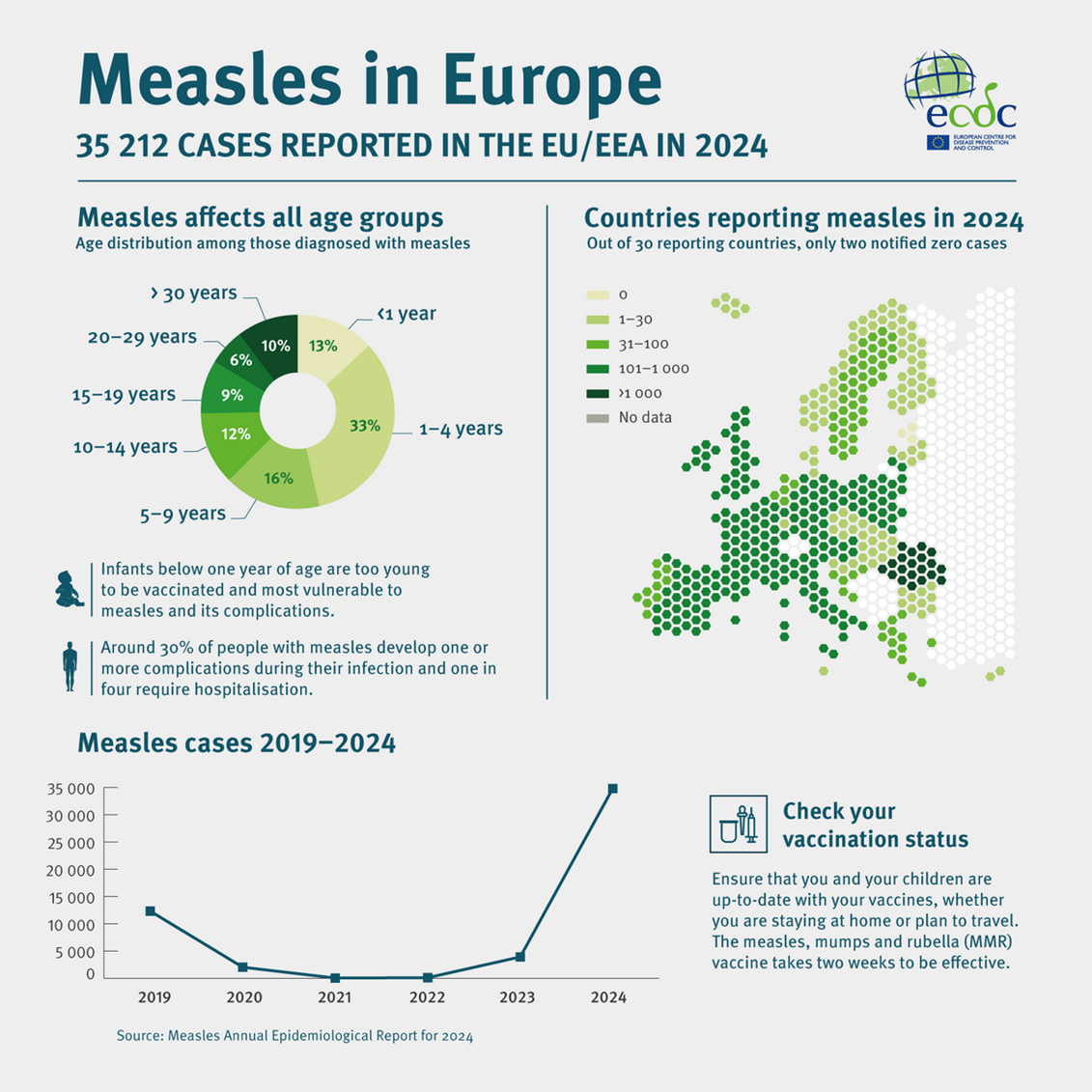The tenfold surge of reported measles cases in 2024 is a stark reminder of the need to restore high immunisation coverage in Europe. That’s according to the European Centre for Disease Prevention and Control (ECDC) which issued a stern warning during European Immunization Week.
Key data
- In 2024, there were 35,212 measles cases reported to the ECDC ‒ up from 3,973 in 2023
- Romania accounted for 87% of reported cases, followed by Austria, Belgium and Ireland
- Where vaccination status was known, 87% of those infected were unvaccinated
- Infants under one year of age (too young to be protected through vaccination) were most affected
- 14 of the 23 measles deaths (22 of which were in Romania) were in children below five years of age
Source: ECDC Annual Measles Report
‘Thanks to vaccination we have eradicated smallpox and controlled serious diseases, such as polio, diphtheria and tetanus,’ says Pamela Rendi-Wagner, Director of ECDC. ‘The challenge for immunisation today is how to safeguard these gains. Accelerated efforts are needed to sustain high vaccination coverage. Every vaccine dose counts, and timing matters for optimal protection.’

Mind the gap
To prevent measles outbreaks and protect vulnerable populations, at least 95% of the population eligible for vaccination should receive two doses of the measles, mumps and rubella (MMR) vaccine. However, vaccination levels in the EU/EEA still fall short of this target, with recent estimates showing that only four countries (Hungary, Malta, Portugal and Slovakia) report such coverage for both doses.
Read more: How behavioural research can improve vaccination rates
Successful vaccination programmes are built on understanding and responding to people’s beliefs, concerns, and expectations. Understanding the social and behavioural barriers and facilitators to vaccination is essential to design effective strategies and interventions to increase vaccination acceptance and uptake.
The ECDC has published new guidance to help improve vaccine uptake, including a survey tool and a library of case studies for improving vaccine acceptance. It also runs online courses in behaviour change for frontline health workers, and in addressing online vaccine misinformation.
Under the recommendations on vaccine-preventable cancers published by the Council of the European Union, the ECDC will publish a dashboard tracking national data on Humanpapillomavirus (HPV) and hepatitis B (HBV) vaccination in EU Member States. It will monitor progress on goals and targets, and involve close cooperation between national authorities and international bodies to avoid ‘double reporting’.

During the pandemic years, the number of measles cases flatlined due to social distancing. However, large numbers of children also missed out on their routine immunisations during this period. Cases of measles, and other diseases such as pertussis, have rebounded sharply.
Dr Sabrina Bacci, Head of VPD and Immunisation, ECDC, said the pandemic disrupted normal immunisation programmes, leading to an accumulation of susceptible individuals. ‘As long as the disease is circulating, it finds the most vulnerable,’ Dr Bacci said. ‘High vaccination coverage is necessary to protect, for example, the very young infants who are at most risk of severe disease. We have to think about measles for infants, but also for other diseases such as pertussis. Virtually all deaths from pertussis in the EU have been below that age of three months.’




